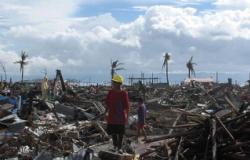The adverse impacts of natural hazards are typically measured separately by the number of fatalities, of injuries, of people otherwise affected, and the financial damage that they wreak. Without a comprehensive measure of disaster impacts it is impossible to fully comprehend their importance and therefore successfully prepare for them. We propose an aggregate measure of disaster impact, which builds on the conceptual underpinnings of the calculations of Disability Adjusted Life Years (DALYs) lost due to the burden of diseases and injuries (WHO, 2013). The proposed measure, however, adds a quantification of the importance of destruction of infrastructure, capital and housing into an overall assessment. The index converts all measures of impact into ‘lifeyears’ units. We then analyze worldwide trends in lifeyears lost to disasters and discuss policy implications of these measurements.
There is a need for better data collection on global risks associated with natural hazards. In particular, the paper highlights that importance of identifying better the ways disasters affect people (through dispossessions, dislocations, health outcomes, etc.).
There is a need to find ways to aggregate and elaborate on this risk, and this article proposes one such method that is people-centric.
The burden of natural disaster impacts is distributed unevenly across space and across income levels, and that calls for an increased international effort to re-allocate resources for disaster risk reduction.
The previous international agreement on disaster risk reduction (DRR), the Hyogo Framework for Action, has not been successful enough in reducing disaster risk. That places an additional burden on the recently agreed Sendai Framework for DRR (signed 18 March 2015 in the UN World Conference in Japan)
